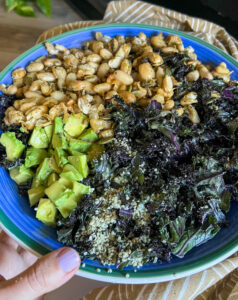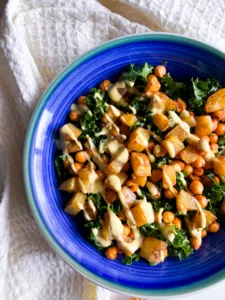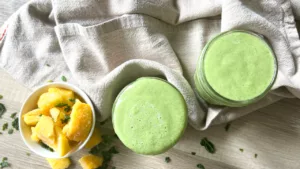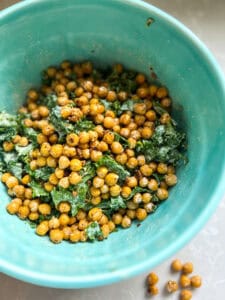Kale, a nutritional powerhouse. Can be transformed into a delectable salad with the right preparation. In this guide, we’ll delve into the art of how to prep kale for salad by massaging kale, exploring techniques, flavor enhancements, and creative presentations. Whether you prefer oil-infused or oil-free methods, this step-by-step tutorial will elevate your kale salads to new heights.
Why Prep Kale for Salads?
Kale, when properly prepped, undergoes a delightful transformation. The process not only softens its texture but also diminishes bitterness, making it a palatable addition to your salads. The meticulous preparation enhances the overall taste and nutritional value.
Choosing the Right Kale
Before we dive into the preparation, it’s crucial to understand the kale varieties available. Opt for fresh, vibrant leaves and explore the different types to find the perfect match for your palate.
Now, let’s delve into the different types of kale, their flavors, and recommended preparation methods.
| Type of Kale | Flavor Profile | Recommended Preparation |
|---|---|---|
| Common Curly Kale | Peppery and bitter, slightly sweet in winter | Ideal for salads, sautéing, hearty bean soup, or blending in smoothies. Soften leaves using massaging tips. |
| Lacinato Kale | Loamy, nutty, sweeter, milder | Traditionally used in Tuscan cuisine. Can be eaten raw or simmered in broth or sauce. |
| Ornamental (Salad Savoy) | Bitter, fibrous, chewy consistency | Primarily bred for appearance. Adds color to gardens and dishes. |
| Red Russian (Ragged Jack) | Semi-sweet, tender, intensifies in cold weather | Ideal for raw salads. Strip off stems for a more pleasant consistency. |
| Chinese Kale | Bitter, thick stalks, suitable for stir-fry | Substitute for regular broccoli. Best enjoyed stir-fried. |
| Siberian Kale | Softer, milder in flavor, versatile | Disease-resistant, good for raw salads, green smoothies, or cooking (steaming, boiling, sautéing). |
| Redbor Kale | Cabbage-like flavor, well-curled reddish leaves | Ornamental and edible. Suitable for ornamental gardens. |
| Baby Kale | Subtle flavor, tender consistency | Best consumed raw in salads. No need for oil massage or stem removal. Suitable substitute for spinach. |
| Portuguese Kale (Tronchuda) | Thick leaves, slightly sweet raw ribs | Best when cooked, cut in narrow strips. |
| Walking Stick Kale | Edible leaves, hint of broccoli and cabbage | Tall variety with a stalk resembling a walking stick. Enjoy sautéed, in soups, stews, or roasted. |
| Scarlet Kale | Cabbage-like with subtle earth notes | Dark green leaves tinged with red veins and stems. Enjoy raw in salads or use in soups and stews. |
| Red Winter Kale | Pleasantly sweet, tender leaves | Improved version of Red Russian kale. Thrives in cold conditions. Suitable for salads and various dishes. |
| Prizm Kale | Sweet and subtly nutty flavor | Parsley-leaved variety, bunched appearance. Ideal for urban gardeners. Enjoy raw in salads or use in various recipes. |
Understanding the different types of kale allows you to choose based on your flavor preferences and desired salad outcome. Experiment with various combinations for a personalized touch to your kale salads.
Watch My Video Below On My Guide To Preparing Fresh Kale
Washing and Preparing Kale
Washing Kale Thoroughly
- Separate the Leaves: Begin by separating the kale leaves from the stems. This can be done by holding the stem with one hand and running your other hand along the sides of the stem in the opposite direction to remove the leaves.
- Soak in Water: Fill a large mixing bowl with cold water. Submerge the kale leaves in the water and swish them around. This helps loosen any dirt or debris.
- Agitate the Water: Gently agitate the water with your hands to ensure thorough cleaning. You may notice sediment sinking to the bottom of the bowl.
- Rinse Under Running Water: Hold each leaf under running water, rubbing it gently to remove any remaining impurities. Pay special attention to the curly edges where dirt can hide.
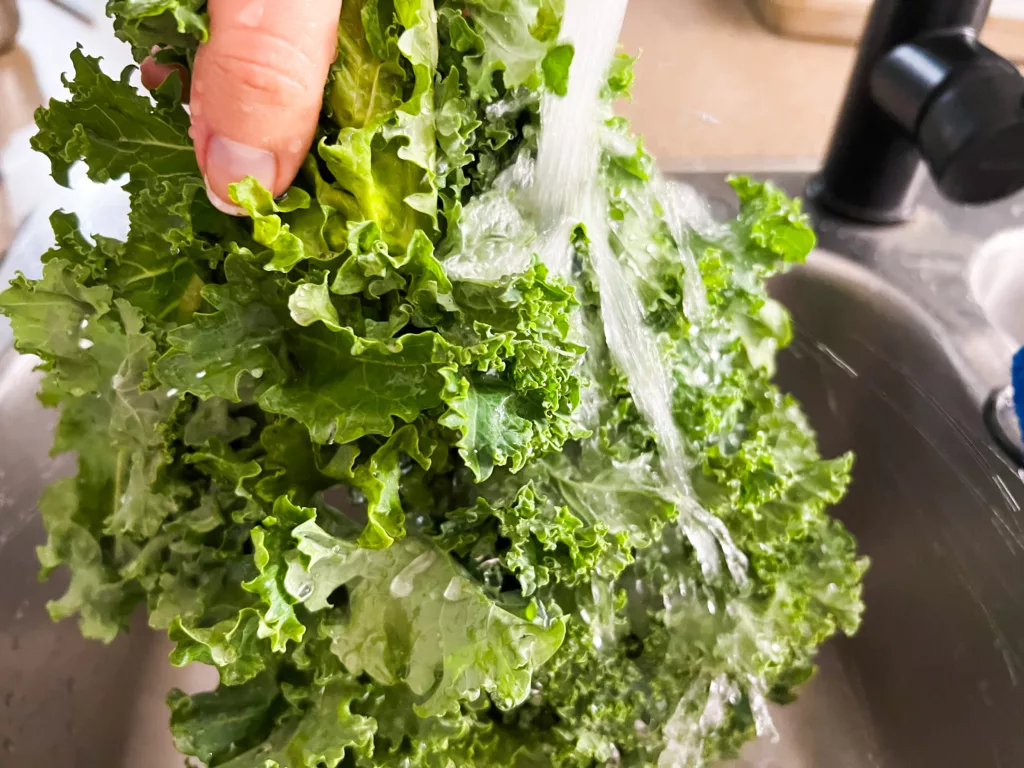
Drying Kale
- Use a Salad Spinner: Place the clean kale leaves in a salad spinner. Spin the leaves to remove excess water. This step is crucial to prevent a watery salad.
- Pat Dry with Towel: After using the salad spinner, pat the kale leaves dry with a clean kitchen towel. Ensure they are completely dry to facilitate the massaging process.
Step-by-Step Guide: Massaging Kale
Understanding the Technique
Massaging kale is a unique technique that involves breaking down the tough fibers, making it more palatable. Here’s a detailed breakdown:
- Purpose: The goal is to soften the kale leaves, reducing bitterness and improving texture.
- Method: Gently rub the kale leaves between your fingers, allowing the pressure to break down the fibrous structure.
- Time: Massage for about 3-5 minutes, or until you notice the leaves becoming more tender.
Massaging Kale with Oil
Massaging kale with oil adds a layer of richness to your salad. Here’s a step-by-step guide:
- Choose Your Oil: Olive oil is a classic choice, but experiment with sesame, avocado, or walnut oil for unique flavors.
- Apply Oil: Drizzle the oil over the kale leaves evenly.
- Massage: Follow the massaging technique mentioned above, ensuring the oil is well distributed.
- Let it Sit: Allow the kale to sit for a few minutes to absorb the flavors.
Oil-Free Kale Massaging
If you prefer an oil-free approach, you can still achieve a delightful outcome:
- Use Citrus: Squeeze fresh lemon or orange juice over the kale. The acidity helps break down fibers.
- Salt Massage: Sprinkle a pinch of salt and massage. The salt aids in the softening process.
- Avocado Mash: Mash a ripe avocado and massage it into the kale for a creamy, oil-free option.
Incorporating Nuts and Seeds Into Your Kale Salads
Nuts and seeds not only add a delightful crunch to your kale salad but also contribute essential nutrients. Here’s a closer look at how to incorporate them:
- Nutritional Boost: Almonds, walnuts, and seeds like pumpkin or sunflower seeds bring a healthy dose of omega-3 fatty acids and other nutrients.
- Toasting: Consider toasting your nuts and seeds for added flavor. Simply pan-toast them over medium heat until they become fragrant, but be cautious not to burn them.
- Distribution: Sprinkle the toasted nuts and seeds evenly over your salad just before serving. This ensures they retain their crunchiness.
- Pairing Suggestions: Almonds complement citrusy dressings, while sunflower seeds work well with a honey mustard vinaigrette. Experiment to find your perfect combination.
Using The Right Dressing
Choosing the right dressing for your kale salad is crucial. Consider opting for a dressing that incorporates honey, agave, or maple syrup to balance out the inherent bitterness of the kale
Vegan Recipes With Kale
FAQ:
While all kale varieties work, choosing fresh and vibrant leaves enhances the salad experience.
Absolutely! Massaging kale tenderizes the leaves, reducing bitterness and improving texture.
Yes, oil-free massaging is an excellent alternative for those seeking a lighter option.
Conclusion: How to Prep Kale
In conclusion, prepping kale for salads is an art that transforms a seemingly ordinary green into a culinary masterpiece. Armed with the knowledge from this guide, experiment, and enjoy the process. Your taste buds will thank you.


